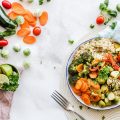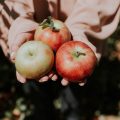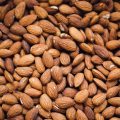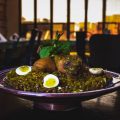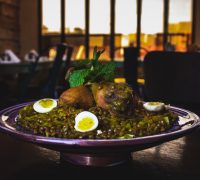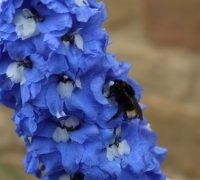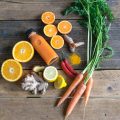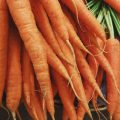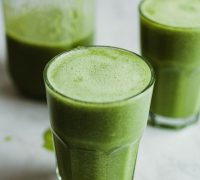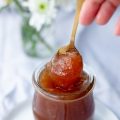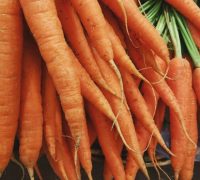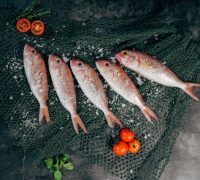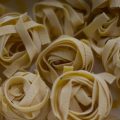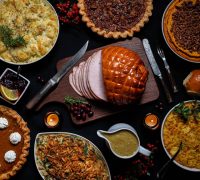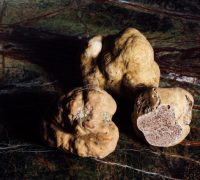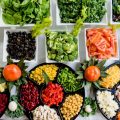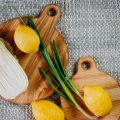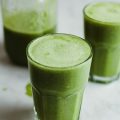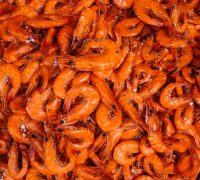Not too long ago, I have made a post about my ethical concerns with eating animals and my attempt to eat an entirely plant-based diet, which took an inglorious end after a few days already and made me realize that I need to eat some meat and fish to be healthy. I got a lot of wonderful feedback on that post, and it helped me a lot to deal with that difficult situation.
Still, my internal misery remained, and I wondered whether I could have done better. Maybe I had rushed too much. Maybe I had not been prepared well enough. Maybe there was something I should have considered, but had not because I had not researched enough.
While thinking about these things, I felt I was getting gradually depressed. I sat there with my bowl of tomato salad and roasted chicken, and suddenly had to cry over it. I could not fall asleep, and when I finally did, I woke of up after a few hours and immediately started crying again. It even happened that I started to cry while sitting in the tram or walking through the supermarket.
So, I researched. I could not sleep anyway, so I spent my nights researching on the internet about how to make a vegan diet work in a soy-free, gluten-free, and relatively carb-reduced way. The things I always have to keep under control are my food allergies and my instable blood sugar levels, therefore the emphasis on protein (I aimed for at least 60 grams a day) and healthy fats, along with fiber from vegetables and fruit. Now, healthy fats and fiber are not a problem on a vegan diet, but protein probably is, particularly when you want for a certain amount of protein without eating soy or wheat protein, and without too many carbohydrates.
This book describes an approach to veganism that is based on fibrous vegetables, legumes, and healthy fats from seeds and nuts, without any soy or wheat, and it also contains recipes and meal plans – I can highly recommend it, regardless of whether you eat a vegan diet or not. So, I realized I would have to rely on legumes and things like quinoa or oat bran for protein, and also to supplement with protein powder. I would also need a variety of seeds and some nut butter, for some more protein and also for healthy fats.
Legumes are tricky for me. Coming with a sensitive digestive system already, I needed to find a way how to make them work for me – and I did. The results of this research I have summed up in my post about tummy-friendly legume preparation. Also, I stocked up on seeds and some whole grains. I bought a vitamin B complex supplement (just to be on the safe side). I soaked adzuki beans. And I made a big batch of almond butter.
Then, I started my second vegan experiment. You must understand that veganism does not come easily to me, because meat and seafood are some of the foods my body can handle the best, while most vegan protein sources give me allergy or tummy troubles. But I was determined, and I really wanted to make it work. Before, I had calculated my nutritional needs on a piece of paper, to be sure I would not run short in anything when I replaced animal foods with plant foods. I soon learned that I needed to eat more fats than before to be satisfied, but that was okay with me. As usual, I ate two larger, solid meals every day (I am not a breakfast eater), but I had to snack more between meals to stay somewhat satisfied. So I did. And although I actually do not want to share my daily intakes on my blog, I will do it this time, just to let you know how it looked like and see that I did my best to eat a healthy, wholesome diet.
MY VEGAN DIET PLAN
Breakfast
rice protein shake
tea with almond milk
Lunch
vegetables cooked with coconut oil or vegetable salad made with olive, canola, or flaxseed oil
legumes (beans, lentils, peas) or whole grains (oats, rice, quinoa)
seeds, almonds, or almond butter
Afternoon Snacks
piece of fruit or smoothie
almonds or almond butter
rice protein shake
tea with almond milk
Dinner
vegetables cooked with coconut oil or vegetable salad made with olive, canola, or flaxseed oil
legumes (beans, lentils, peas) or whole grains (oats, rice, quinoa)
seeds, almonds, or almond butter
Evening Snacks
tea with almond milk
almonds or almond butter
glass of wine
I think this is a quite balanced eating plan, and the first days went rather well. I felt a little lower in energy and my tummy was more noticeable than usual, but it was within the borders of what I considered acceptable, especially since I had superior goals with this project. Here are some of the things I ate. I will share some of the recipes soon, because they were really good.
~ adzuki beans with fresh tomatoes, parsley, and pumpkin seeds ~
~ green peas and kabocha with pumpkin seeds ~
~ green lentils with carrots and bell pepper ~
~ oat bran porridge with kabocha and poppy seeds ~
~ adzuki beans with beetroot and pumpkin seeds ~
However, after a few days, I was more and more feeling hungry all the time, and also the food sat heavily on my stomach. Around that time, it happened that I was invited to a sushi-making and eating evening with friends, and I ate a few bites of salmon and realized that I did not have to cry.
~ the brown rice sushi was for me ~
From then on, I sometimes ate a little fish or seafood with my dinner, like three prawns or a tiny piece of fish. This was possible without feeling too bad. But still, I tried to eat as little of it as possible.
In the second week of my experiment, my well-being was declining rapidly. My tummy got worse, and my concentration suffered because I was so concerned and distracted from feeling hungry and in pain. This also meant that my work suffered, and on some days, I almost could not work at all. That was the sign for me to stop. I broke my meat-free diet plan with the one and only dish that does not work with legumes (it will probably work with tofu, but you know, tofu is not for me): chicken and fruit. And it was amazing to see how a small amount of chicken is more satisfying for me than a serving of legumes with seeds.
~ roasted chicken and red onion with a sliced green apple ~
However, going back to my regular eating as before did not work well this time, probably because my second experiment had lasted for almost two weeks. And it left its traces with me. It took three days until my hunger and satiety regulation was working normally again. Moreover, five days out of my experiment, my belly is still swollen and sensitive to pressure. Walking is painful, and eating something solid, even my otherwise compatible foods, gives me the dagger-in-the-tummy feeling. The pain is quite impressive. So, major calamity over here. And it seems that I have totally underestimate in which bad condition my gut actually is.
I know there are people out there who eat a vegan diet and are healthy and fine with it. But for me, an entirely plant-based diet does not work. To be honest, I envy these people a little, because they can eat what is good for them and is in accordance with their ideals. That is a very happy situation. I also love animals, and I also care for the planet, with all my heart, but I cannot eat in a way that allows me to express these feelings. And please understand that I will not try it again.
Overall, I believe that all of this was valuable and necessary for my stubborn little mind to learn that I cannot control everything, regardless of how much I try. There are things I just have to accept. I also have to learn to take care of myself, and to sometimes put my own interests in the first place, if I want to remain. And this is where the circle is closing: I am at the end of my eating journey, and will return to my personal diet which has evolved during the past two or so years: lots of vegetables, almond milk, chicken, fish and seafood, healthy fats, some fruit, some brown rice, some legumes such as adzuki beans and lentils. Mostly plant-based, but not entirely. I am starting to see this diet as a kind of medical treatment I have to stick to in order to remain healthy, probably for a lifetime. I do not mind anymore, because by now, I am far beyond the point where I would want to eat for pleasure. Also, seeing food as medicine makes it easier for me to eat animals, simply because I have to eat them if I want to be healthy and free of pain. I will eat for health, and whatever is necessary to maintain my health. And I will eat for energy, so that I can do all the things that are important to me: research, piano playing, and being there for my family and friends.
But first, it is high time that I take care of my tummy. I think I have an irritable and probably leaky gut which needs a little treatment now. And please do not worry about me, because ill weeds grow apace, and I already have a plan.



